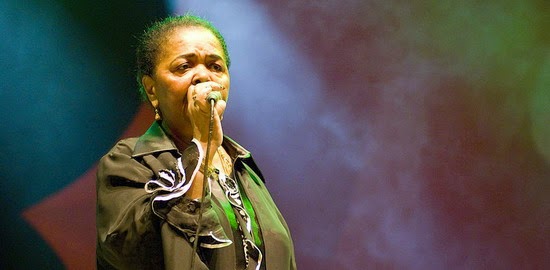Cape Verde, officially named the Republic of Cabo Verde, is an island
country, consisting of an archipelago of ten volcanic islands, 350 miles off
the West African coast out in the central Atlantic Ocean.
When Portuguese explorers originally discovered the islands in the 15
th
century, they were uninhabited.
The explorers soon saw how useful the perfect positioning of these islands could be for the
African slave trade.
Unfortunately, the
positioning also attracted a mix of pirates and privateers.
Among some of the more famous visitors to arrive on the islands are Sir
Francis Drake in the 1580s, and
Charles Darwin’s
expedition made a stop there in 1832.
As the slave trade gradually lost popularity, the
Cape Verde islands became
more settled and that excellent positioning now came in handy again, this time for supplying visiting ships, as the islands
were located within the major shipping lanes between Australia, India and
Europe.
Up until 1975, when Cape Verde achieved independence, the islands remained a
colony of Portugal.
For many years, salt mining was a popular industry, but these days, the salt is mainly used locally and the Cape
Verdean economy is mostly service-oriented with an emphasis on foreign
investment and tourism.
Despite a lack of natural resources on the islands, Cape Verde has been
praised as being an example among the African nations for its great stability
and developmental growth, taking second place only to Mauritius on the
Ibrahim Index of African Governance (IIGA) in 2014.
The islands enjoy an excellent, year around climate, with warm and mild
temperatures, and offer an amazing range of different landscapes, with mountainous scenes, forests,
volcanoes, excellent white and black sand beaches, seasonal floral displays and
deserts.
Cape Verde also has a fascinating cultural wealth, and the music of the
islands includes the famous “Morna” music and dance, made internationally
famous by
Cesária Évora. Popularly known as the “Barefoot Diva,” as she preferred to perform
without shoes, Évora has also been dubbed the "Queen of Morna.” Other
famous performers from Cape Verde include Ildo Lobo and Nelson Freitas.
Morna is a rather melancholy song-form, normally sung in the local Creole
language or in Portuguese.
The music is
a mix of Brazilian, Caribbean and Portuguese influences. Morna is usually
accompanied by the cavaquinho, clarinet, guitar and violin.
Other traditional Cape Verdean music includes
Funaná,
Coladeira,
Batuque and
Cabo love.
After improvements to the harbor and airport facilities throughout Cape Verde, all islands are all reasonably easy for visitors to access.
In certain areas, large modern “All-Inclusive” hotels have sprung up
including the Club Hotel Riu Karamboa on Boa Vista and the Club Hotel Riu
Funana/Garopa on Sal.
While these major hotels
are excellent for tourists, there has been much criticism by the poorer locals, as
the hotels bring in their own supplies, import everything including their staff, and do not buy locally. Please see the video below about Boa Vista island and if possible, when holidaying in Cape Verde, stick to the locally run, more traditional accommodation.:
In total, around 222 tourist accommodation establishments of various
different kinds are available for visitors, including the major resorts, along
with small hotels, residences and pensions.
While the varying landscapes of the different islands offer different
activities for visitors, the main popular options are wave sailing (a type of
windsurfing), as well as many other water sports, fishing, hiking, birding and
just plain exploring.
Evenings on all
the islands offer a lot in the way of both local entertainment and delicious
local cuisine.
Language-wise, the locals speak Portuguese and a Cape Verdean Creole and in
the major and more popular centers of the islands, English is reasonably widely
spoken.
A video below gives a brief introduction to the history of the islands and
anyone interested in seeing more can access a playlist of videos about the
islands
here.
Photo credits:























